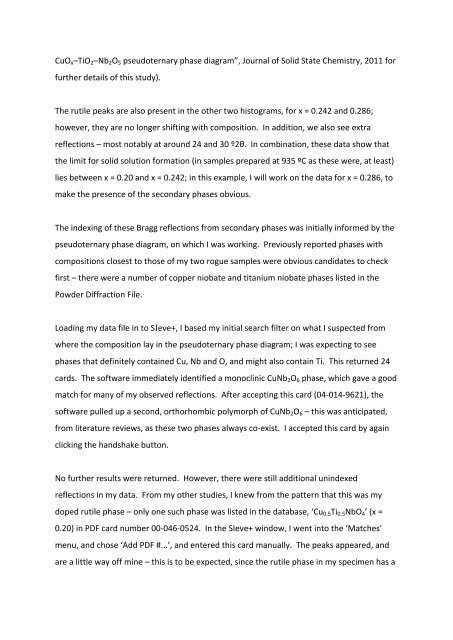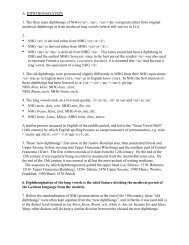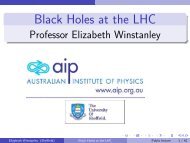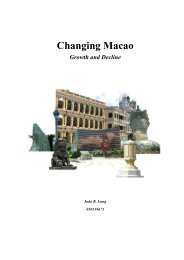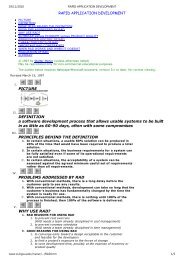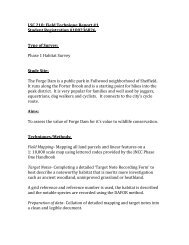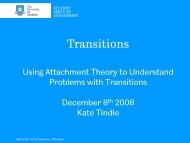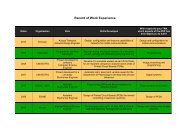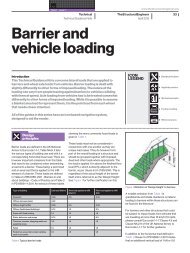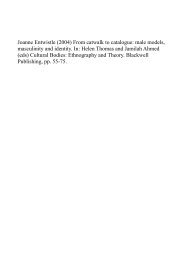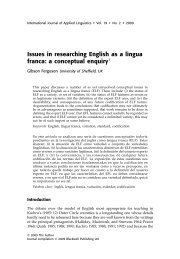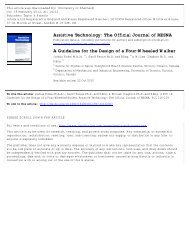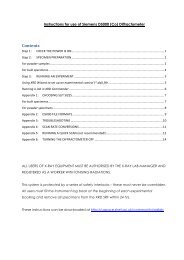ICDD PDF-4+ 2012 Instructions
ICDD PDF-4+ 2012 Instructions
ICDD PDF-4+ 2012 Instructions
Create successful ePaper yourself
Turn your PDF publications into a flip-book with our unique Google optimized e-Paper software.
CuOx–TiO2–Nb2O5 pseudoternary phase diagram”, Journal of Solid State Chemistry, 2011 for<br />
further details of this study).<br />
The rutile peaks are also present in the other two histograms, for x = 0.242 and 0.286;<br />
however, they are no longer shifting with composition. In addition, we also see extra<br />
reflections – most notably at around 24 and 30 º2θ. In combination, these data show that<br />
the limit for solid solution formation (in samples prepared at 935 ºC as these were, at least)<br />
lies between x = 0.20 and x = 0.242; in this example, I will work on the data for x = 0.286, to<br />
make the presence of the secondary phases obvious.<br />
The indexing of these Bragg reflections from secondary phases was initially informed by the<br />
pseudoternary phase diagram, on which I was working. Previously reported phases with<br />
compositions closest to those of my two rogue samples were obvious candidates to check<br />
first – there were a number of copper niobate and titanium niobate phases listed in the<br />
Powder Diffraction File.<br />
Loading my data file in to SIeve+, I based my initial search filter on what I suspected from<br />
where the composition lay in the pseudoternary phase diagram; I was expecting to see<br />
phases that definitely contained Cu, Nb and O, and might also contain Ti. This returned 24<br />
cards. The software immediately identified a monoclinic CuNb2O6 phase, which gave a good<br />
match for many of my observed reflections. After accepting this card (04-‐014-‐9621), the<br />
software pulled up a second, orthorhombic polymorph of CuNb2O6 – this was anticipated,<br />
from literature reviews, as these two phases always co-‐exist. I accepted this card by again<br />
clicking the handshake button.<br />
No further results were returned. However, there were still additional unindexed<br />
reflections in my data. From my other studies, I knew from the pattern that this was my<br />
doped rutile phase – only one such phase was listed in the database, ‘Cu0.5Ti0.5NbO4’ (x =<br />
0.20) in <strong>PDF</strong> card number 00-‐046-‐0524. In the SIeve+ window, I went into the ‘Matches’<br />
menu, and chose ‘Add <strong>PDF</strong> #...’, and entered this card manually. The peaks appeared, and<br />
are a little way off mine – this is to be expected, since the rutile phase in my specimen has a


